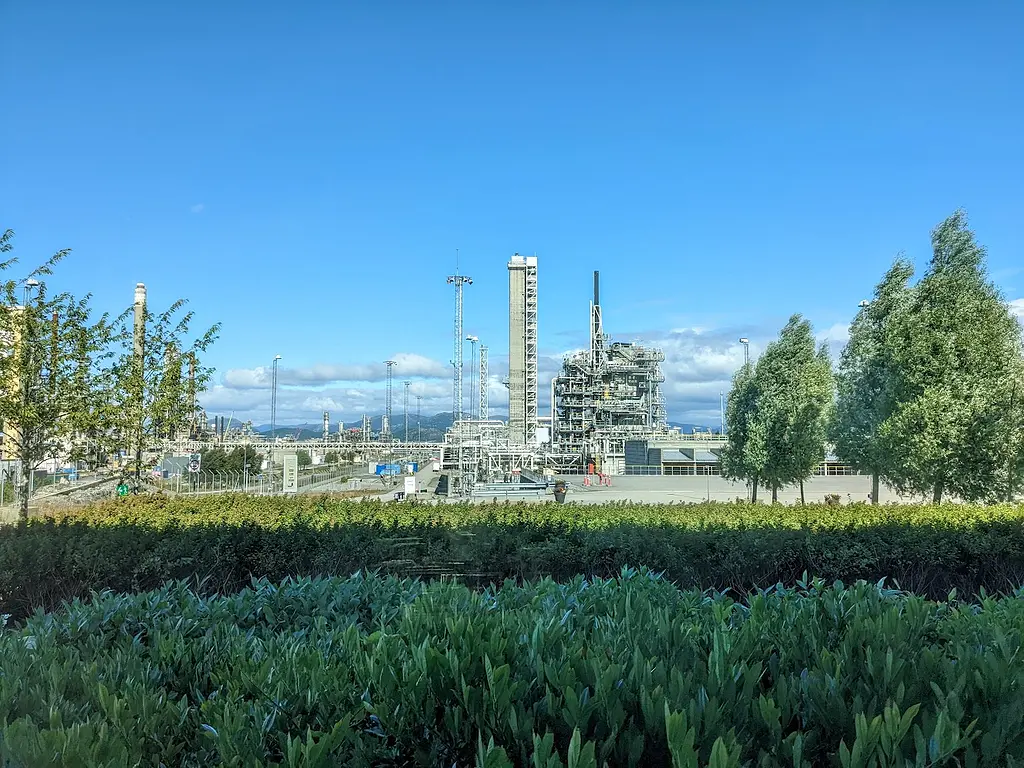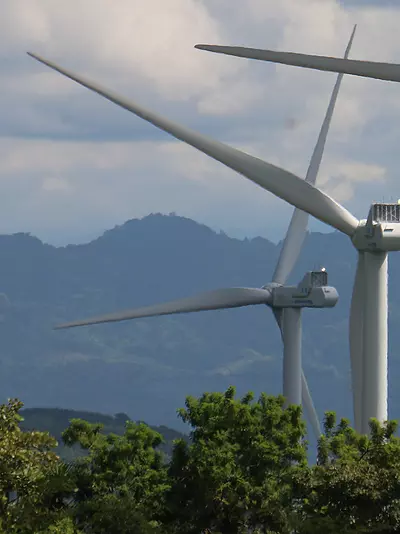
Though the world is making strides to reduce greenhouse gas (GHG) emissions, even drastic cuts in fossil fuel use will not be sufficient to prevent the worst impacts of climate change. Scientists estimate we also will need to capture 10 billion tons of carbon dioxide (CO2) from the atmosphere annually to meet the internationally agreed upon goal of net-zero greenhouse gas emissions by 2050.
Carbon capture can complement renewable sources like wind and solar to mitigate hard-to-abate fossil fuels on the electric grid. Because renewable sources are intermittent, fossil fuels and/or storage systems like batteries are needed to provide electricity during down times. However, the world’s supply of rare earth metals is insufficient to build batteries at a large enough scale needed for grid energy storage. As renewables are adopted, fossil fuel use is expected to decline until coal and natural gas generate no more than 30% of our electrical supply. One way to help mitigate the impact of fossil fuel use is by capturing CO2 emissions.
Nature based carbon sequestration can be achieved through planting trees or avoided deforestation, but this likely will not be sufficient to mitigate enough carbon from the atmosphere. Though forestation removed about 2 billion tons of CO2 this year, that still left another 8 billion tons to be addressed through capture technology. I feel optimistic that we can close this gap by 2050 based on the current progress and development in the carbon capture, utilization, and storage (CCUS) communities.
Carbon Capture Technology: Point Source vs Direct Air
The two primary tools for carbon capture are point source capture (PSC) and direct air capture (DAC). PSC uses technology to separate CO2 from exhaust gases of industrial process the moment the CO2 is produced. DAC removes CO2 directly from ambient air. The cost of PSC technologies has dropped substantially in recent years, making it a more affordable approach to tackling climate change. PSC technologies now cost between $50-$70/ton of carbon captured, compared to DAC estimates of $400-$1,000/ton. This is because CO2 is present at a much higher concentration of 3-20% in process exhaust gas compared to about 0.04% in ambient air.
Though both carbon capture technology approaches will be needed to help us reach our net-zero goal, I will focus here on PSC, specifically capturing CO2 from an exhaust gas using a liquid solvent before the gas enters the atmosphere.
Liquid solvent technology has been around since the 1940s, when it was used to remove CO2 at small chemical complexes. Scaling the liquid solvent to an unprecedented level to match large chemical complexes, such as power plants, requires larger investment but is currently being proven at scale. Over 14 years of research, with funding from the Department of Energy, RTI has developed non-aqueous solvent (NAS) technology that is both highly efficient in removing CO2 emissions and cost-effective at large scale.
NAS technology is almost ready to be implemented on a large scale. We documented its techno-economic viability in a recent demonstration project in Norway. With support from the 45Q federal tax credit from the Inflation Reduction Act, the capture cost is now low enough to facilitate industry adoption and is expected to drop further with expanded commercialization. We have partnered with SLB, a global leader in energy technology, to design CO2 capture plants, which SLB will install and operate at client facilities to lower the clients’ global carbon footprint.
Challenges in Carbon Capture: Emissions, Water and Storage Requirements
There are a few financial and operational uncertainties for us to resolve before this innovative approach to carbon capture can achieve its full potential. Though PSC confers the co-benefit of removing other pollutants generated from the combustion of coal or natural gas in addition to CO2 (SO2, NOx), a top technical concern is controlling secondary emissions from the solvent. Engineering controls, like filters or scrubbers that limit emissions of volatile solvent-related species, can be put in place and are part of the high cost of the capture process.
CO2 capture plants also require water for cooling because they generate a lot of heat. Though sea water, surface and ground water, and even wastewater could be used for cooling—and then returned to the original source because it would contain no new contaminants—this could be an issue in regions where water supplies are limited.
We must also address what to do with the carbon that is removed from the atmosphere. We could sink some of it into the 3 billion tons of concrete produced annually. Another way would be converting CO2 into other chemicals through various reactions pathways to create the raw materials needed to produce fuel, fertilizer, and polymers. But given the staggering quantity of carbon that needs to be removed, long-term underground storage in geologically suitable areas must be considered, as well as the associated CO2 pipeline infrastructure. This raises the issue of who will pay for the long-term monitoring and stewardship of storage.
Socially Equitable Frameworks for Carbon Capture
It is crucial to locate and develop capture plants and CO2 pipeline projects through socially equitable frameworks to ensure that they provide benefits to the affected communities, such as generating jobs, improving wages, and creating opportunities to re-skill or up-skill the local workforce. Installing the carbon capture plant provides a co-benefit of improving the air quality in the surrounding areas. For example, the particulates, sulfur dioxide, and nitrous oxides emitted by local power plants that contribute to air pollution and its associated health concerns are reduced by the capture plant.
Carbon capture can offset the social cost of carbon (SCC), which varies depending on who is making the assessment. The Environmental Protection Agency estimated the SCC to be $190 per ton of CO2 last year. Though that is about five times higher than what was reported five or six years ago, it may still be too low. The cost of carbon capture that both emitters and consumers will bear in decades to come is a relatively short-term pain in the grand scheme and the SCC significantly outweighs the cost of capture.
To put that into perspective, here is my version of SCC assessment: I grew up in Samut Prakarn, Thailand, a coastal province just south of Bangkok that shares a border with the city. About 1.3 million people live there, with a contribution to gross domestic product (GDP) to Thailand comparable to the state of Illinois to the US. If CO2 emissions are not mitigated, models predict rising sea levels will submerge the entire province in about 100 years. I would think most would agree that losing Illinois would cause both an enormous financial impact and human hardship.
Though technology is advancing rapidly, we must all expect to experience some short-term social and economic challenges as we strive to decarbonize by 2050. Atmospheric CO2 now registers at 416.92 parts per million—a 50% increase since the start of the Industrial Revolution. It’s been 4.5 million years since the world experienced CO2 levels this high. We are embarking on a massive undertaking to begin turning things around in just two decades. This transitional period will likely bring higher electricity prices and generate friction around societal costs, benefits and losses, and other issues. However, we must start tackling the problem now and adopt strategies that continue to address it beyond our lifetimes. Otherwise, humanity will be facing a rather bleak future.
Learn more about our services and capabilities related to decarbonization sciences.



